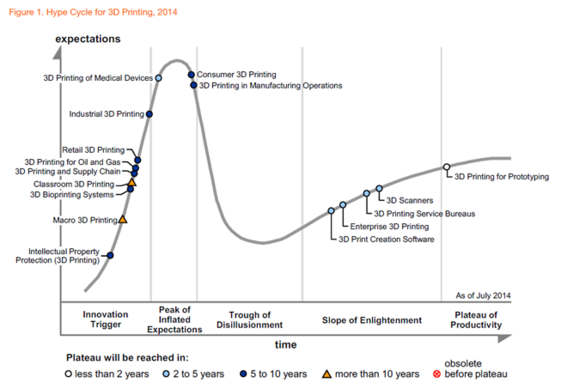3D printing has been tipped as a technological game changer for some time, but after a hesitant start it looks as if this potential is slowly starting to be realised.
As demonstrated in this recent presentation by ictQATAR's Rassed research program(disclaimer, I work there) examples of 3D printing are already starting to be used to do everything from building houses through to clothes and cosmetics.
But it's in the medical and industrial manufacturing arenas where this nascent technology is starting to make the most headway.
Health Developments
CCTV.com reported earlier in the year that surgeons at a hospital in China had replaced the second vertebra in a 12-year-old boy's neck with a 3D print; after the original was damaged by bone cancer. Closer to home, in May doctors and scientists in Southampton completed their first hip surgery using a 3D print which was designed to the patient's exact specifications and measurements.
As a result of these innovations, it's not surprising that CNN has suggested that 3D printed human organs may not be that far behind. It's a logical next step, and one that isn't that far fetched when you consider the fact that the biotech startup Organovo has already reported success in creating synthetic blood vessels and miniaturized cellular 3D human liver tissue. The leap from this to printing an entire organ, really could be made in the next few years.

Model of a spine with a 3D-printed artificial axis from Beijing, where doctors claim to have successfully implanted into the spine of a bone cancer patient.
Photograph: Jason Lee/Reuters
Retail Innovations
Meanwhile on the High Street, Selfridges hosted a pop-up store last year which gave shoppers a chance to sample a range of 3D printing products, including 3D "selfies," whilst Amazon launched their online 3D printing store this summer offering consumers "3D printed jewelry, home decor, tech accessories, toys & games, and more."
John Lewis' 'any shape, any fabric' sofa personalisation scheme also provides opportunities for customers to purchase materials which have been 3D printed in store.
It will be some time however before we see these emerging developments migrate from the High Street to the home. According to the analysts Gartner, "consumer 3D printing is around five to 10 years away from mainstream adoption."
The Future
"Nothing is certain - except for the fact that everything will change."
Jeremy Garner, creative consultant, Orange Digital
Reasons for this delay in domestic adoption including important considerations such as cost, as well as the different needs of consumer and enterprise markets. As a result, it is anticipated that an increased adoption of 3D printing by businesses - coupled with the 3D printing of medical devices - will continue to lead the way for this emerging technology.

Prediction curve for 3D technologies from Gartner (July 2014)
A further reason for this elongated timeline for mainstream adoption, there's also the underappreciated fact that the technology is also more complicated than perhaps many people realise.
"Hype around home use obfuscates the reality that 3D printing involves a complex ecosystem of software, hardware and materials, whose use is not as simple as 'hitting print' on a paper printer." Pete Basiliere, research vice-president Gartner
This means that macro 3D printing of large structures and classroom 3D printing are more than 10 years away from becoming an everyday reality.
So although innovations such as Wikihouse and domestic printers do exist, we're unlikely to all be printing 3D castles or fancy dress costumes anytime soon.
